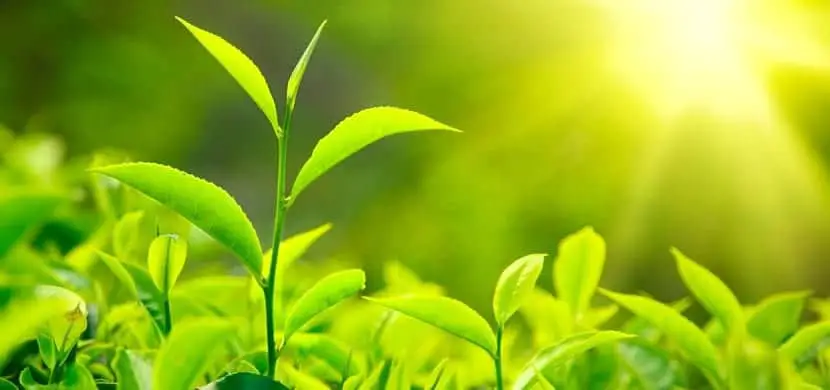

Animal and plant cells differ in some ways. The main difference is that the plant cell possesses chloroplasts and the animal does not. Chloroplasts are generally large organelles that are present in plant cells. Generally, a leaf cell is capable of harboring between 20 and 100 chloroplasts. These organelles have a special function that we will see in this article.
We are going to explain everything you need to know about chloroplasts, their functions and the importance they have in the world of botany.
Key features


We are going to analyze the main characteristics of these organelles. We find a variable morphology. There are spherical, elliptical, and other more complex shapes. The set of chloroplasts in a cell forms what is known as platidium. Inside the platidium there is DNA with about 250 genes from which ribosomal RNA, transfer RNA and messenger RNA are encoded. The latter is the one produced in the chloroplast itself, it will provide the necessary protein for the organelle to divide and to carry out photosynthesis.
That is, without chloroplasts, plants could not photosynthesize. There would be no exchange of CO2 for oxygen in the atmosphere. Regarding the morphology of these organelles, they are made up of several compartments. The most external compartments are made up of two membranes, external and internal. Unlike the mitochondria, the membrane that it has does not have folds.
Inside the chloroplasts we can see the thylakoids. These are flattened sacks that are also delimited by a membrane and stacked. They are forming coin-pile-like structures called granum. These stacks are laterally connected by membranes. In the membranes that have thylakoids are the proteins and molecules that are used to carry out photosynthesis.
Division and movement of chloroplasts


These organelles have to be dividing continuously for the cells to proliferate and have an adequate number in the functional stage of photosynthesis. It does not have to happen every time, but the cell, just as it divides, can be synchronized with the division of chloroplasts. Normally, the synchrony between the division processes of these organelles and the cell takes place in plants that only have a single chloroplast. In the cells in the mesophyll of the leaves, the chloroplasts divide in order to increase in number, although the cell will not divide further. This results in an increase in chloroplasts per cell. If the cell continued dividing, the chloroplasts would not increase their number per cell, but would be distributed by the others.
On the surface of the leaves, the number of chloroplasts that form is controlled or determined by the size of the cell. Chloroplasts generally have to divide through daughter cells as long as cell division occurs.
As we have mentioned before, the division of chloroplasts depends entirely on the proteins that have been synthesized in the nucleus. In the process of division, two protein rings are formed where they mix, on the one hand proteins of the chloroplast itself, and on the other the proteins related to the genes of the cell nucleus.
When a plant has to adapt to different sunlight conditions, it simply relocates all the chloroplasts it has in its cell to be able to adapt to those conditions. Although the movement is slow, it is enough to adapt. And it is that excess light can weaken chloroplasts and make photosynthesis less effective.
Chloroplast functions
Photosynthesis


The main function of these organelles is to carry out the photosynthesis process. We are going to analyze the functions step by step. To take advantage of the sun’s energy, chloroplasts are responsible for converting the electromagnetic energy that comes from sunlight into chemical bonds. Photosynthesis has two main parts by which the whole process happens. The first part, is the light phasein which the light energy that hits the plant with a proton gradient will be used for the synthesis of ATP and the production of NADPH.
Furthermore, photosynthesis has another dark phasein which light is not needed, but the products that have been generated in the light phase are. In this dark phase is where the fixation of CO2 occurs in the form of phosphate sugars. The first phase of photosynthesis takes place in the thylakoid membrane and the second in the stroma.
Other functions


In addition to contributing to photosynthesis in plants, chloroplasts have many other functions. Some main functions stand out, such as the synthesis of amino acids, nucleotides and fatty acids. They also participate in the production of hormones, vitamins and other secondary metabolites, helping in the assimilation of nitrogen and sulfur to the body. As we have commented in other articles, nitrate is the main source of nitrogen for plants. Hence, many nitrogen fertilizers have a high content of this compound.
Well, it is thanks to chloroplasts that plants can use this nitrate. Some of the metabolites formed in the chloroplast serve to protect against various pathogens or in plant adaptations to stress, excess water or more heat.
Finally, these organelles are also in continuous communication with other components of the cell and with the nucleus itself. This is due to in the nucleus reside many genes whose proteins have the function of contributing to photosynthesis.
As you can see, chloroplasts are the most important organelles in plant cells. Mainly it is the difference between animal cells, since they do not have chloroplasts. With all the functions it fulfills, if it were not for them, many of the living conditions that we have today would not exist, since photosynthesis would not exist.
